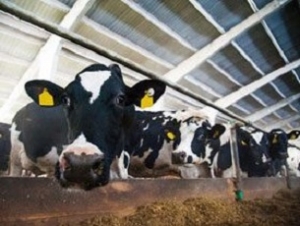Health and Welfare
Tweaking health management with a monitoring system

Here’s the blueprint:
Successful electronically monitored farms don’t discard their pre-system health program immediately upon deploying the monitoring system. Instead, they keep the old program in place and use the information generated by the monitoring system to evaluate the inefficiencies in the pre-monitoring health program to assist them in designing their sensor-data driven health program.
Keeping the conventional health program in place during the first weeks will not only serve to evaluate future courses of action, but it also serves as the safety net to keep things on course while the evaluation and trial process is happening.
Once a baseline of cow behavior has been established by the monitoring system, the cows flagged by the monitoring system’s health report will fall into three categories when compared with the pre-monitoring system program:
-
Cows that are flagged by both the monitoring system and the conventional health program.
-
Cows that are flagged by the monitoring system yet appear not to have “anything wrong with them” by the conventional health program.
-
Cows that are flagged by the conventional health program (show clinical signs) but do not appear on the monitoring system’s report.
Cows flagged by both the conventional and the sensor driven programs (number 1 above) should be diagnosed and treated per existing farm protocols. Monitoring cows’ reactions to treatments using the monitoring system may provide insight into the effectiveness of these protocols.
The second category of cows, those flagged only by the monitoring system that have no clear diagnosis, present the first challenge to the conventional health protocols. To the uninitiated, this may either be a great example of early detection or just a false alarm. To find out a cow on this list’s progress, she should be tracked over the next few hours and days. These cows will either get better on their own and disappear from the health report or they will continue to get worse and show you what is the problem.
If they develop a discernable health issue, you’ve just witnessed early detection at its best. Now it’s time to decide how these cows are to be diagnosed and treated. This is an exceptionally good time to start looking at redesigning diagnostic protocols. You want these protocols to be as thorough as possible so that nothing slips by them and the animal gets the right treatment as soon as possible. These diagnostic protocols will be applied to every cow that appears on the health report in the future.
But even with the most thorough treatment protocols in place, some cows’ issues will not be diagnosed. Make sure you design a treatment protocol for those cows. Many users report that drenching these undiagnosed cows improves their wellbeing and see increased daily rumination and a subsequent removal from the health report.
The third category of cows, those that are physically found with clinical symptoms yet have not been flagged by the monitoring system present a completely different challenge. Perhaps she can get better on her own, without any treatment? Many monitoring system users report that cows that display clinical symptoms that ruminate daily more than 350 minutes usually “eat themselves out of the health issue.” It is important to find the minimum daily rumination level that management is comfortable with after gaining more experience with the health thresholds in their herd.
Be sure to monitor the cow’s rumination time closely. If daily rumination time is stable or is rising, she will most likely be fine without getting treated. If a significant drop in daily rumination appears, she will need attention and will be listed on the system’s health report.
A few weeks after implementation of the protocols suggested above alongside the old health protocols, it should be clear to the entire staff that the cows that need management attention are getting it and the cows that don’t need management attention do not.
At this point the door is open to more advanced applications of the monitoring data, where specific treatment protocols are evaluated on an individual cow basis.














